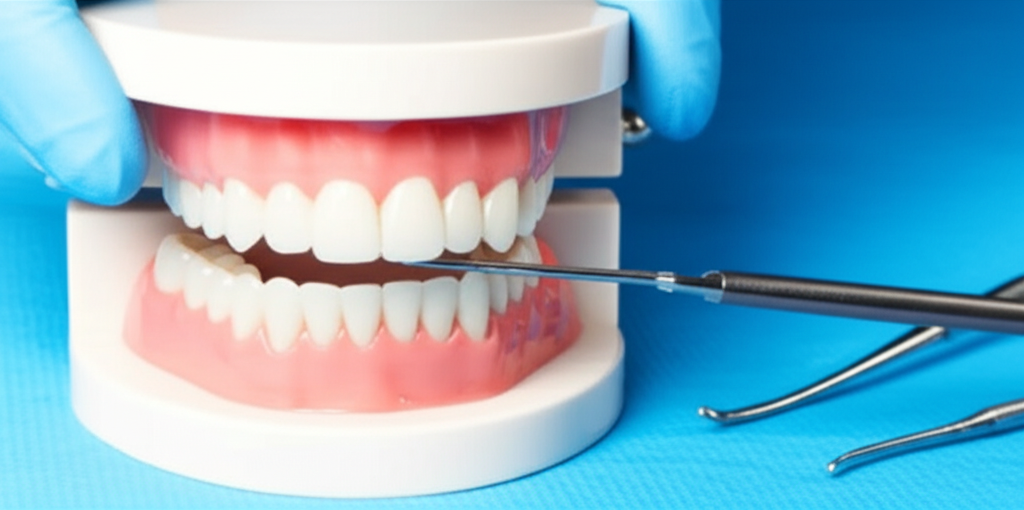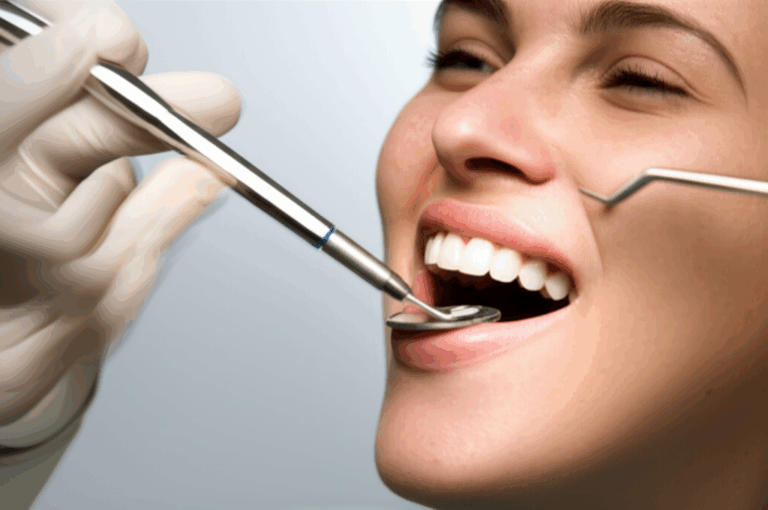
A Clinical Guide to Dental Traumatology: My Experience Mastering Traumatic Dental Injuries
Table of Contents
Introduction to Dental Trauma: Understanding the Scope
If someone told me early in my dental job that I would lose sleep thinking about knocked-out teeth and root breaks, I probably would have laughed. But after years of helping people with these accidents—especially scared kids and worried parents—I see dental trauma care is part science, part art.
Dental traumatology means the study and handling of dental injuries. These injuries happen suddenly, like teeth breaking, popping out, or moving from their normal spot. I learned fast that acting quick and sticking to easy steps often saves a tooth instead of losing it.
I noticed most accidents happen to children and teens—especially boys. These usually take place at home, school, or during sports. Knowing this helped me talk to families about how to stop injuries before they happen and how acting fast is super important.
For me, it’s simple: The faster you check and step in, the better it goes. Every minute is important, especially before the ligament around the tooth dries out.
Initial Assessment and Accurate Diagnosis of Dental Trauma
Comprehensive Patient History
One thing I figured out fast is that the story behind the injury is almost as important as what you see in the mouth. I always ask how the accident happened, when, and where. Did the child fall on hard ground? Was the tooth knocked out during a soccer game? Was it left dry or kept in something like milk?
Never skip the person’s medical info—you don’t want a kid leaving your office without a needed tetanus shot. Always ask about allergies and health problems that might make things tricky.
Clinical Examination Protocols
My first look is always outside the mouth. Is there swelling? Bleeding? Any signs the jaw is hurt? Then I check inside for cuts, loose teeth, and if the teeth hurt when you tap them. I look for cracks and check for bleeding from the tooth.
To check if the tooth pulp is alive, I use electric or cold tests. But I’ve learned these can be wrong right after the accident, especially in young permanent teeth. Still, a good result usually makes everyone feel better.
Essential Radiographic Assessment
Radiographs (X-rays) are super helpful in dental trauma. I use different X-ray angles to see if a tooth has a crack you can’t see by eye. For more serious injuries—like when the jaw bone is involved or there are root breaks—CBCT (3D X-ray) really helps.
A quick tip: Compare to the opposite tooth if you don’t know what “normal” looks like. This has saved me from making a mistake many times.
Classification and Step-by-Step Management of Specific Dental Traumatic Injuries
Injuries to Dental Hard Tissues and Pulp
Enamel Fractures
These might sound small, but they can stress people out. I always explain that a quick filling will make it look and work like new, and that helps calm everyone down. Most times, this is a simple fix.
Uncomplicated Crown Fractures (Enamel-Dentin)
If the break goes deeper but doesn’t reach the pulp, I try to glue the broken piece back on if it’s there. If not, a simple white filling usually works. Picking the right color and shape helps it look good and feel strong.
Complicated Crown Fractures (Pulp Exposure)
These are more serious and get my heart racing. The main thing is to cover the pulp fast. I use calcium hydroxide or MTA to cap or partly remove the pulp—especially when the root isn’t done growing. Acting quick here can help keep the tooth alive.
Crown-Root Fractures
These are hard to deal with. You need to hold the broken part, check how loose it is, and sometimes the patient needs surgery or the tooth out. The outcome really depends on how fast you spot and treat the break.
Root Fractures
Root breaks need lots of patience and check-ups. Where the break is (at the end, middle, or near the crown) matters a lot since breaks at the bottom heal better. I use a soft or medium splint for about 4 weeks and keep checking if the pulp stays healthy.
Injuries to Periodontal Tissues (Luxation Injuries)
Concussion & Subluxation
For these small injuries, if the tooth isn’t out of place or too loose, just watching is okay. But I always warn families to come back if the tooth gets dark, hurts, or feels different later.
Extrusive Luxation
When a tooth is partly out of the socket, I gently push it back and put on a soft splint for two weeks. This helps the ligament heal better.
Lateral Luxation
If the tooth is pushed to the side and stuck, I move it back as gently as I can and splint it. Sometimes I also adjust the bite if it hits wrongly.
Intrusive Luxation
When teeth are pushed into the bone—mostly in kids growing—the approach is gentle. Sometimes the tooth moves back on its own, but sometimes we need braces or surgery to help it out. If the root is finished growing, the tooth often dies, so close check-ups are needed.
Avulsion: The Critical Management Protocol
A knocked-out tooth is a real emergency. The heroes are parents or teachers who put the tooth in milk or HBSS (not water!). If it dries out, the chance of saving it drops fast.
At the office, I gently clean the root (sometimes in doxycycline for kids to slow damage) and put the tooth right back in. I splint it for two weeks and give antibiotics and a tetanus shot if needed.
Injuries to Alveolar Bone and Adjacent Soft Tissues
Alveolar Bone Fractures
If a few teeth move together, think about jaw bone breaks. This needs a strong splint, and sometimes a specialist should see the patient. If there are deep cuts, stopping infection is really important.
Soft Tissue Lacerations
I always wash out the cut before sewing it up, and will give antibiotics if there’s dirt or the wound is deep. For lips or tongues, lining everything up right and keeping the stitches loose helps healing and looks better.
Advanced Treatment Modalities and Techniques
Splinting Materials and Duration
When I started, I thought hard splints were best. Now, I know soft or medium splints are much better for the ligament. For avulsed teeth: two weeks. For root breaks: four weeks. This rule really helps save teeth.
Vital Pulp Therapy & Regenerative Endodontics
For kids with open root tips and pulp showing, I use apexification or, better yet, pulp revascularization. MTA helps the root keep growing. These new methods have saved lots of teeth that would have been pulled out before.
Restorative Approaches Post-Trauma
Looks matter, especially to young people. The first time I glued a crown piece on for a 10-year-old and brought her smile back, it felt amazing. Now, I often get help from a dental ceramics lab for tough cases—they combine looks and how well things work. For even bigger repairs, I might ask a veneer lab or crown and bridge lab for a custom tooth.
Pharmacological Support
Pain control matters. I give NSAIDs and, if needed, antibiotics—but only if really needed. For tough or long procedures in kids, sometimes sedative or anesthesia is needed. Once in a while, I give a tetanus booster, always checking local rules first.
Long-Term Management, Prevention, and Potential Complications
Essential Follow-up Protocols
I found out right away that even perfect first care can’t promise a good ending. You must check and X-ray the tooth at 2 weeks, 1 month, 3 months, 6 months, and every year. The tooth pulp can die months later in kids, so don’t skip follow-ups.
Common Post-Traumatic Complications and Their Management
- Pulp Necrosis shows with pain, color change, or a dead test weeks later. Then, root canal is needed.
- Root Resorption is my least favorite—especially after a knocked-out tooth that was dry too long. If it’s out longer than 60 minutes and kept dry, the risk is almost certain.
- Ankylosis happens when bone grows right onto the root. It’s more common in kids who are still growing and if the tooth was out too long. I warn parents this can make the tooth look shorter as the jaw grows.
- Infection: If there’s swelling, pus, or a dark spot on X-ray, then retreatment or taking out the tooth is needed.
Problems like weak enamel or root bends can show up years later after baby tooth injury. That’s why I always stress coming back for checks.
Factors Influencing Long-Term Prognosis
From what I’ve seen, how fast you act, how bad the injury is, if the root is finished, and how good the treatment is all important. How well patients (and parents) follow up makes a huge difference too. Missing visits or not brushing can lead to losing the tooth.
Prevention Strategies
Stopping trauma feels even better than fixing it. I teach parents, coaches, and kids that mouthguards can cut sports injuries by 80%. I talk to teachers to prepare them for quick dental injury help—a speedy response really saves teeth.
Teaching patients and families is half the job. I give out simple guides, show videos, and share personal stories—these help the message stick.
Conclusion: Elevating Patient Care in Dental Traumatology
After treating hundreds of dental accidents, I learned: every second counts, and good talk keeps away more problems. Following easy, proven rules—like those from the IADT—is the best way to help people.
Dental trauma care is always changing. Digital X-rays, digital dental lab tech, and new ways to help teeth heal are tools I never thought of as a student. But the basic idea is the same—treat the whole person, not just the tooth. Help with pain, nerves, and daily life after injury.
If you’re a dentist, parent, or coach, know this: you can really help. With quick steps and a good plan, even hopeless teeth can get a new chance.
Key Takeaways from My Clinical Experience
- Act fast. Teeth do better if you help quickly and the right way.
- Don’t miss details. Careful assessment, good notes, and coming back for checks are just as important as what you do at first.
- Prevention is better. Nothing beats stopping injuries before they happen.
- Teamwork matters. Hard cases sometimes need help from root doctors, kids’ dentists, surgeons, and repair experts.
Looking for help with tricky fixes after dental accident? I’ve worked with great folks at dental ceramics labs, crown and bridge labs, and digital dental labs for made-for-you repairs that look and feel great.
By sharing my story and what I picked up helping people with dental injuries, I hope you feel ready to handle these problems—at the clinic, in the game, or at home.
If you have your own experience or question about dental trauma, reach out—I’m always ready to help.








